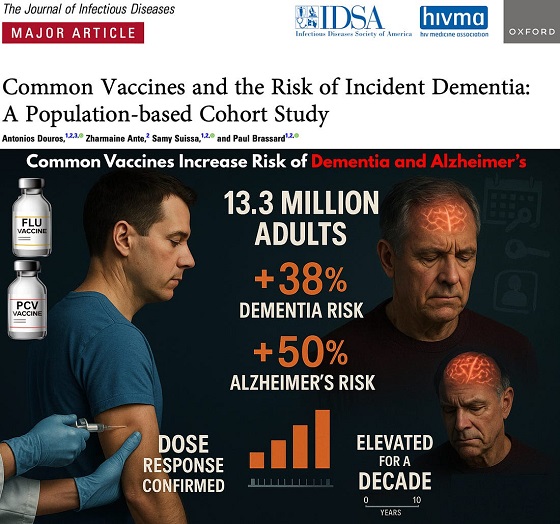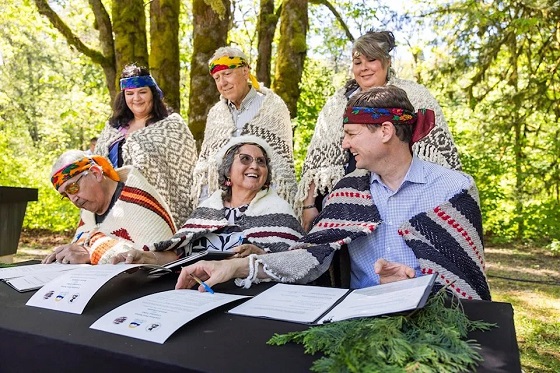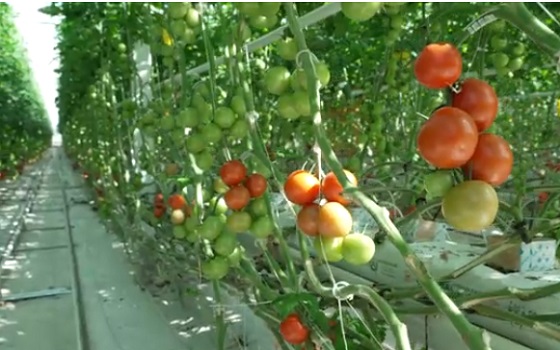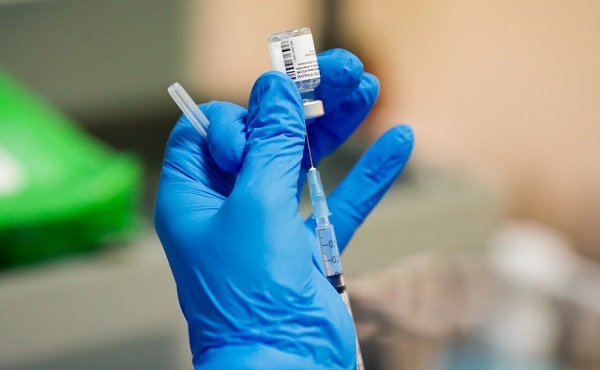Opinion
Red Deer holds the dubious title of having the poorest ambient air quality. The province has some ideas on that.

Our air quality in Red Deer has been very poor for years and I always felt that every level of government left it for the other levels of government to find a cure.
Our provincial government has taken steps since forming government in 2015. Some were expensive yet effective like reducing our dependency on coal. Some steps were eye ball rolling steps like doing more studies.
Our municipal government is taking steps and are talking about taking more steps. Let us hope that it finds the planning department and we can make the appropriate changes that I believe is necessary. For starters do we need all 5 high schools built and planned for, along 30 avenue and no high schools north of the river where 30% of the population resides? Would it mean a lot less commuting for 30% of the students if did not have to commute across the city to go to school and participate in extra-curricular activities? Just asking.
Studies are influenced by interpreters and interpretations, adding to or subtracting from parameters and by time lines. Different elements like SO2 or NOX if added or removed from comparables will affect the interpretations. In any interpretation we still have poor air. Possibly the worst air in Canada on average. Of course downtown Calgary, Toronto, or Edmonton may peak during rush hour traffic but overall we hold the title of worst ambient air quality.
So to recap. Let us go back to a story on CBC News.
Alberta is hoping to relieve Red Deer of a less than prestigious title. The central Alberta city, for years, has had the worst ambient air quality in the province. (CBC NEWS September 2015)
A report in September confirmed what many in the region already believed.
Industrial activity and vehicle emissions had pushed Red Deer’s ozone and fine particulate matter levels above national standards going back to 2009.
The province’s action plan, heavily based on its previously-announced plan to eliminate coal pollution by 2030, was introduced Thursday.
In a statement, Noah Farber of the Asthma Society of Canada said a reduction in coal pollution is a step in the right direction.
“The Alberta government’s commitment to the elimination of coal fired electricity generation is a positive step to improving air quality for all Albertans. This is particularly true for those with asthma and other respiratory diseases, who will now be able to breathe well and live healthy active lives,” Farber said.
The province is giving the Parkland Airshed Management Zone a grant of $250,000 to identify and monitor sources of pollution.
Another $560,000 will help a new air monitoring station in Red Deer provide more detailed identification of pollution sources for the region.
The Alberta Motor Association will continue driver education with an aim of reducing practices like idling, that increase emissions.
Red Deer outlined a series of actions the city was taking to address the issue following the September report, including buying 30 per cent of its energy from green sources and expanded public transit options, among others.
(CBC NEWS)
Alberta Environment Minister Shannon Phillips says the province is on track to have the worst air quality in Canada, and vows the government will put measures in place to reduce emissions from industry and vehicles.
“The time to act is long overdue,” Phillips said.
“We have a responsibility to do everything we can to protect the health of Albertans.”
Phillips made the remarks after seeing the results of the Canadian Ambient Air Quality Standards report, which show the Red Deer region has exceeded national standards. Four other regions — Lower Athabasca, Upper Athabasca, North Saskatchewan and South Saskatchewan — are close to exceeding national standards.
Phillips said there is no immediate health risk for people living in central Alberta.
“These results are concerning,” Phillips said in a news release. “We can’t keep going down the same path and expecting a different result. Our government has a responsibility to protect the health of Albertans by ensuring air pollution from all sources is addressed.”
The province will initiate an “action plan” to deal with poor air quality in the Red Deer area, a move she said is required under the Canadian Ambient Air Quality Standards.
The government said a scientific study looking into the cause of the air pollutants is currently underway, and people living in the Red Deer area, industry stakeholders and the provincial energy regulator will be consulted. That plan is expected to be complete by the end of September and will take Red Deer’s geography and air patterns into consideration.
As part of the plan, Phillips said the government will:
Review technology that could be used to reduce emissions.
Review whether polluters in Alberta are meeting national standards.
Look at other ways to reduce emissions, for example, ways to curb vehicle emissions.
The Pembina Institute, non-profit think tank focused on clean energy, was quick to follow up with its own statement about the air quality results, saying the report shows the need for a provincewide pollution reduction strategy.
“This new report adds to the mounting evidence that Alberta needs to reduce air pollution across the province. Measures that will produce more rapid results are also needed in the numerous regional hot spots identified by the report,” said Chris Severson-Baker, Alberta’s regional director at the Pembina Institute.
“The report shows that, unless emissions are cut, most of the province risks exceeding the Canadian Ambient Air Quality Standards for fine particulate matter. This places an unacceptable burden on people’s health and on the environment,” he said.
The Canadian Association of Physicians for the Environment has also weighed in on the report, saying it is “dismayed, but not surprised” by the findings.
“This calls into question the pervasive belief that the clear blue skies of Alberta foster clean air, safe from the pollutants better known from smoggier climes,” said Dr. Joe Vipond, an emergency room doctor and member of the association.
Phillips blamed the previous Tory government for contributing to the rising pollution levels, saying the PCs resisted meaningful action on climate change.
Canadian Ambient Air Quality Standards are national standards for particulate matter and ozone exposure.
I received this e-mail this past week from the Director of Air Policy for the Government of Alberta. The Premier did not toss my concerns into the wastebasket but forwarded it to someone who can actually answer some questions. Spoiler alert, there will be some eye-ball rolling.
My name is Hamid Namsechi and I am the director of Air Policy for the Government of Alberta. Premier Notley forwarded a copy of your letter regarding your concerns about air quality and the need for action to reduce air pollution in Red Deer.
The Government of Alberta takes the health of Albertans very seriously. There are many agencies both inside and outside government that look after protecting the quality of our environment. For example, while the Departments of Health and Environment and Parks are responsible for human and environmental health policies and outcomes, agencies such as Alberta Energy Regulator, Clean Air Strategic Alliance, Alberta’s ten airshed organizations, Alberta municipalities, etc. all work collaboratively to ensure the quality of air in Alberta meets all provincial and national standards.
As for action on emissions, you will be happy to know that significant progress has been made since the 2011-2013 Red Deer air quality assessment report was released in September 2015. For starters, part of taking action on reducing fine particulate matter in Red Deer is improving the state of knowledge. Until 2014, Red Deer Riverside was the only monitoring station in the Red Deer area. The Red Deer Lancaster monitoring station was added as a second air quality monitoring station in late 2014. This station will help us to understand if fine particulate matter concentrations vary in different parts of the City of Red Deer.
In April 2016, the Government announced funding for two significant studies to take place in Red Deer. One study involved air quality modelling to determine the relative impact of various sectors on the air quality in Central Alberta. The other is a long-term monitoring study which has commenced sampling and will continue to sample fine particulate matter at three locations in and around the City of Red Deer. These studies will provide valuable information regarding likely sources of emissions that are contributing to the issue of high fine particulate matter concentrations in the City of Red Deer.
Direct action has been taken to reduce emissions from the coal-fired electricity generation at the Battle River site – the biggest source of air pollution in the Red Deer region. As you are aware, coal plants produce a number of air pollutants when they burn coal to make steam to generate electricity. During combustion in air, the sulphur dioxide (SO2), various nitrogen oxides (NOx), mercury (Hg), primary particulate matter (PM) and a number of other emissions such as heavy metals are produced as by-products. The operating permit of the Battle River units has now been revised and recent records show that emissions are down by over eighty percent from pre-2015 levels.
Similarly, all industrial approvals for other facilities in the Red Deer region are currently being systematically looked at for opportunities to reduce emissions. After Minister Phillips news conference in 2015, industrial approvals staff in both Alberta Environment and Parks as well as the Alberta Energy Regulator have stepped up the stringency of the emissions standards for facilities operating in stressed airsheds.
As for reducing the volume of non-industrial emissions, there has also been a lot of progress since 2015. Alberta Government has been working with the Clean Air Strategic Alliance, federal Government, Alberta municipalities, agricultural sector, industry and environmental non-governmental organizations to develop strategies to reduce the cumulative impacts of emissions from the many small sources (such as transportation).
The good news in all of these from the ambient air quality perspective is that Red Deer’s latest fine particulate matter readings have substantially improved since the Minister’s news conference. Our preliminary assessment of the 2016 annual average for PM2.5 at Riverside Station shows a forty six percent reduction compared to the historical high levels, which puts the current air quality in Red Deer in the yellow range.
Thank you for taking the time to share your concerns with the Government of Alberta.
Sincerely,
Hamid Namsechi, P.Eng.
Air Policy Director
Policy & Planning Division
Environment and Parks
So we have seen some improvements, will it be enough? Is it just another interpretation?
Internet
Dead Internet Confirmed: It’s agents, trolls and clankers all the way down

By James Corbett
corbettreport.com
Remember when I wrote about the Dead Internet Theory? You know, the idea that most of what we see, read and hear on the internet is bot-generated?
Well, guess what? That theory has been confirmed! Everyone you talk to online is a bot, spy, troll or psyops warrior!
And, as you’re about to see, it gets even worse before it gets (hopefully) better.
Intrigued? Want to know what this means for the future of the internet? Or, much more importantly, what it means for the future of human community? Then read on!
This Substack is reader-supported.
To receive new posts and support my work, consider becoming a free or paid subscriber.
FOREIGN SPIES UNMASKED
If you’ve been “surfing the web” since the early days of the “information superhighway,” you’ll no doubt recall one of the earliest online jokes: “On the internet, nobody knows you’re a dog.”
Now, in 2025, it seems we may need to amend that joke to take it from a pithy observation about online anonymity to a dire warning about the weaponization of online anonymity: “On the internet, no one knows you’re a foreign psyops officer.”
You see, last month the social media platform formerly known as Twitter decided to roll out a new feature: a location tool that reveals the country or region in which a given account is based. The result? A lot of foreign psyops warriors got caught with their pants down.
@MagaNationX?
Screenshot
…Turns out that account is actually based in Eastern Europe.
And the @IvankaNews Ivanka Trump fan account?
It seems that particular Trump-loving Ivanka fan is based in the MAGA stronghold of . . . Nigeria?
And it’s not just those accounts. The @BarronTNews_ Barron Trump fan account (that posted heartfelt birthday messages to “Dad” Donald before it was exposed as a fan account)? The “UltraMAGA Trump 2028” account? Those accounts and numerous others were discovered to be originating from similarly far-flung corners of the globe.
You can imagine the field day that headline writers of the dinosaur legacy media had with these revelations:
- X’s new feature raises questions about the foreign origins of some popular US political accounts;
- Has X’s new location feature just exposed MAGA influencers as foreign trolls?;
- New X Feature Reveals Top MAGA Accounts Based Overseas;
- &c.
Indeed, it seems every online outlet was able to find examples of their ideological enemies being exposed as foreign agents.
Israeli outlet ynetnews, for example, is reporting that the X location feature has unmasked a “fake Gaza influencer network” with accounts purporting to be of Gazans under attack that actually originate from Malaysia, Afghanistan, Pakistan and other distinctly non-Gazan locales.
Some users protested their geographic identification or added context to their apparent location. The @1776General_ account, claiming to be “Constitutionalist, Patriot  , Ethnically American” but found to be “based in Turkey,” countered with a post noting: “I work in international business. I’m currently working in Turkey on a contract.”
, Ethnically American” but found to be “based in Turkey,” countered with a post noting: “I work in international business. I’m currently working in Turkey on a contract.”
Remarkably, even the US Department of Homeland Security had to tweet a reassurance that it is, in fact, American, after apparently doctored screenshots circulated suggesting the account was based in a foreign country.
X, for its part, attempted damage control over the incident—advising users that “its new feature could be partially spoofed by using a VPN to mask a user’s true location”—before removing the location information altogether.
And so The Day The Foreign Spies Were Unmasked came and went. For one brief moment, people were reminded of one of the fundamental lessons of the internet: you have no idea who (or what) you are “talking to” in online conversation.
Perhaps the account feeding you a “first person” tale of some breaking news event or “on-the-ground” analysis of a military conflict actually is whoever they’re claiming to be. Or perhaps they’re a dog. But it’s certainly possible they’re a foreign agent attempting to influence your opinion by feeding you fake, misleading or selective information.
This should not be news to anyone who has been paying attention.
Long-time Corbetteers will recall my 2018 report on The Weaponization of Social Media, in which I reported that:
- the Pentagon was “buying software that will enable the American military to create and control fake online personas—fake people, essentially—who will appear to have originated from all over the world”;
- government-owned computers at the Army Corps of Engineers offices in New Orleans were caught verbally attacking critics of the Corps;
- Israeli groups were giving courses on how to edit Wikipedia articles to ensure content on the online encyclopedia remains “Zionist in nature”; and
- an internal document from the GCHQ—Britain’s NSA equivalent—had been leaked, exposing that the British spies were using social media platforms to spread propaganda and influence public opinion.
And that was seven years ago. Imagine how much worse things have gotten since then, after the Q Anonsense psyop and the advent of the 77th Brigade and the takeover of every major social media platform by “ex”-intelligence officials.
Yes, it’s no surprise to anyone in the conspiracy realist community that the internet is flooded with spies who are actively attempting to mislead you.
But wait, it gets worse!
CLANKERS DEPLOYED, TROLLS UNLEASHED
Why assume that the account you’re interacting with is human—or even canine? As chatbot technology advances, it’s increasingly likely that you’re talking to a machine.
I’m not talking out of my posterior here. I’m talking statistically.
You might not have caught this story when it flitted through the newswires earlier this year, but it’s confirmed: bots now account for over half of all internet traffic.
That is the alarming (but hardly surprising) conclusion of the Imperva Bad Bot Report, an annual assessment of bot activity on the internet by cybersecurity company Imperva. This year’s report found that not only do “bots”—that is, automated programs running tasks on the internet—now account for 51% of all online traffic but that 72% of that bot activity is malicious.
Once again, this is not news to those paying attention. Indeed, as I observed in my “The Internet is Dead“ editorial two years ago:
If this theory [i.e., the Dead Internet Theory] is correct, then the computer-created content of the dead internet includes not just the obviously inhuman content on the web—the spam that overruns every unmoderated comment section, for instance, or the botnets that flood social media with identically worded propaganda posts—but everything: the content itself, the commentary on that content, the “people” we interact with online, even audio podcasts and video vlogs and other seemingly human-generated media.
While the concept of a bot-dominated internet might have seemed outlandish when the theory was first floated, it is decidedly less outlandish in this age of Sora video slop and AI news article slop and AI scientific paper slop and AI podcast slop. After encountering the Facebook Shrimp Jesus phenomenon, who can doubt that the web is increasingly populated by bots posting AI-generated content for consumption by other clankers in some sort of snake-eating-its-own-slop version of the internet that only makes sense to the likes of Zuckerberg and Musk?
But wait, it gets even worse!!!
Not only do the average Joe and average Jane have to contend with the online spooks, spies and cyberwarriors pumping propaganda out in furtherance of their paymasters’ and string-pullers’ nefarious agendas, and not only do they have to sift through the mounds of AI slop to find genuine human interaction online, but they also have to deal with the trolls who are there to poison that human interaction “for the lulz.”
Anyone who has spent time in the comments section of a website, or, increasingly, in discussion on a social media platform, knows exactly why the term “rage bait” has been chosen as Oxford’s word of the year for 2025. As every netizen is all too aware, these days any online conversation with enough participation to be interesting is inevitably dominated by the lowest common denominator of loud, obnoxious and boorish behaviour.
But the trolls are a different breed altogether. They set rage bait and spew bad faith arguments online as a way of (at best) venting their anti-social tendencies in an environment where they won’t be punched in the face and (at worst) deliberately steering online conversation away from productive topics.
In the course of my research, I sometimes come across old school online fora and other long-forgotten parts of the web showcasing how online discussions unfolded twenty or more years ago, before the advent of social media. The difference between those discussions and what passes for online discourse today is never less than breathtaking. You can witness people of a bygone internet era having in-depth discussions, sometimes on important political or social matters upon which the posters fundamentally disagree. But, unlike anything you’d see today, these online debaters of yore not only spent time articulating their viewpoint and how they arrived at it, they actually listened to their interlocutors and (gasp!) engaged them in good faith. Sometimes, they even conceded points or agreed to disagree.
The fact that such fruitful online discourse is now a thing of the past is, obviously, something to lament. But what makes it even worse is that the types of toxic rage-inducing flamewars that pass for online discourse these days are now starting to manifest in the real world. An entire generation of young people who have grown up primarily online and in internet trolling culture have been socialized into thinking that this is what natural human discussion is. They are now reflecting that attitude in their everyday, offline, “IRL” behaviour, leading to the breakdown of social mores we see around us today.
In other words, the dead internet is leaking.
Yes, as we’ve seen, things are going from bad (the online spies and cyberwarriors) to worse (the AI slop of today’s web) to even worse (the trolls who are threatening to tear apart the very fabric of society).
But here’s the real question: does it get better?
WHAT IT MEANS
As usual, the answer to that question is what we make of it.
Sure, there are things we can do to make the online world slightly more human (in the good sense).
You can avoid the spies and trolls and cyberwarriors (at least for the most part) by avoiding the major social media platforms altogether and participating in discussion in more elite circles (like the comment section of corbettreport.com, to take one completely random example).
You can take greater control of your online life by using RSS instead of allowing algorithms to determine what you’ll read or watch or listen to next.
Heck, there’s even a new “Slop Evader“ browser extension you can install that promises to help you explore the pre-AI slop internet by searching for content from before ChatGPT was unleashed on the world. (Although, as even its creator notes, this extension is just a simple date filter for Google search results and thus not a fundamental solution to the crisis.)
But perhaps the real solution to this bot-generated, spook-propagated, troll-inflamed Dead Internet emergency is not to be found online at all. Perhaps the real solution is to be found in actual human community. In real people coming together in the real world to reconnect with what is really human.
Yes, that seems like a pie-in-the-sky fantasy in today’s online world, doesn’t it? But if we can’t even dream it we’ll surely never achieve it.
Like this type of essay? Then you’ll love The Corbett Report Subscriber newsletter, which contains my weekly editorial as well as recommended reading, viewing and listening.
If you’re a Corbett Report member, you can sign in to corbettreport.com and read the newsletter today.
Not a member yet? Sign up today to access the newsletter and support this work.
Are you already a member and don’t know how to sign in to the website? Contact me HERE and I’ll be happy to help you get logged in!
This Substack is reader-supported.
To receive new posts and support my work, consider becoming a free or paid subscriber.
Business
Fuelled by federalism—America’s economically freest states come out on top

From the Fraser Institute
Do economic rivalries between Texas and California or New York and Florida feel like yet another sign that America has become hopelessly divided? There’s a bright side to their disagreements, and a new ranking of economic freedom across the states helps explain why.
As a popular bumper sticker among economists proclaims: “I heart federalism (for the natural experiments).” In a federal system, states have wide latitude to set priorities and to choose their own strategies to achieve them. It’s messy, but informative.
New York and California, along with other states like New Mexico, have long pursued a government-centric approach to economic policy. They tax a lot. They spend a lot. Their governments employ a large fraction of the workforce and set a high minimum wage.
They aren’t socialist by any means; most property is still in private hands. Consumers, workers and businesses still make most of their own decisions. But these states control more resources than other states do through taxes and regulation, so their governments play a larger role in economic life.
At the other end of the spectrum, New Hampshire, Tennessee, Florida and South Dakota allow citizens to make more of their own economic choices, keep more of their own money, and set more of their own terms of trade and work.
They aren’t free-market utopias; they impose plenty of regulatory burdens. But they are economically freer than other states.
These two groups have, in other words, been experimenting with different approaches to economic policy. Does one approach lead to higher incomes or faster growth? Greater economic equality or more upward mobility? What about other aspects of a good society like tolerance, generosity, or life satisfaction?
For two decades now, we’ve had a handy tool to assess these questions: The Fraser Institute’s annual “Economic Freedom of North America” index uses 10 variables in three broad areas—government spending, taxation, and labor regulation—to assess the degree of economic freedom in each of the 50 states and the territory of Puerto Rico, as well as in Canadian provinces and Mexican states.
It’s an objective measurement that allows economists to take stock of federalism’s natural experiments. Independent scholars have done just that, having now conducted over 250 studies using the index. With careful statistical analyses that control for the important differences among states—possibly confounding factors such as geography, climate, and historical development—the vast majority of these studies associate greater economic freedom with greater prosperity.
In fact, freedom’s payoffs are astounding.
States with high and increasing levels of economic freedom tend to see higher incomes, more entrepreneurial activity and more net in-migration. Their people tend to experience greater income mobility, and more income growth at both the top and bottom of the income distribution. They have less poverty, less homelessness and lower levels of food insecurity. People there even seem to be more philanthropic, more tolerant and more satisfied with their lives.
New Hampshire, Tennessee, and South Dakota topped the latest edition of the report while Puerto Rico, New Mexico, and New York rounded out the bottom. New Mexico displaced New York as the least economically free state in the union for the first time in 20 years, but it had always been near the bottom.
The bigger stories are the major movers. The last 10 years’ worth of available data show South Carolina, Ohio, Wisconsin, Idaho, Iowa and Utah moving up at least 10 places. Arizona, Virginia, Nebraska, and Maryland have all slid down 10 spots.
Over that same decade, those states that were among the freest 25 per cent on average saw their populations grow nearly 18 times faster than those in the bottom 25 per cent. Statewide personal income grew nine times as fast.
Economic freedom isn’t a panacea. Nor is it the only thing that matters. Geography, culture, and even luck can influence a state’s prosperity. But while policymakers can’t move mountains or rewrite cultures, they can look at the data, heed the lessons of our federalist experiment, and permit their citizens more economic freedom.
-

 Focal Points2 days ago
Focal Points2 days agoCommon Vaccines Linked to 38-50% Increased Risk of Dementia and Alzheimer’s
-

 Automotive1 day ago
Automotive1 day agoThe $50 Billion Question: EVs Never Delivered What Ottawa Promised
-

 Alberta20 hours ago
Alberta20 hours agoAlberta introducing three “all-season resort areas” to provide more summer activities in Alberta’s mountain parks
-

 Health2 days ago
Health2 days agoThe Data That Doesn’t Exist
-

 Business1 day ago
Business1 day agoStorm clouds of uncertainty as BC courts deal another blow to industry and investment
-

 Agriculture19 hours ago
Agriculture19 hours agoGrowing Alberta’s fresh food future
-

 Business2 days ago
Business2 days agoThe Climate-Risk Industrial Complex and the Manufactured Insurance Crisis
-

 COVID-1916 hours ago
COVID-1916 hours agoTrump DOJ seeks to quash Pfizer whistleblower’s lawsuit over COVID shots












